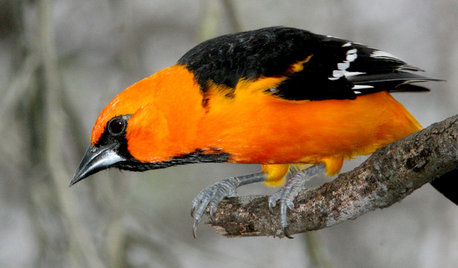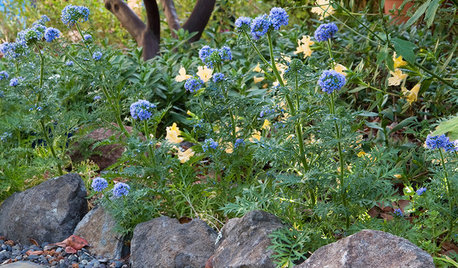Return of the Blister Beetles
Okie4Ever
11 years ago
Related Stories

GARDENING GUIDESBackyard Birds: Orioles Return After Spending Winter in the Tropics
These colorful songbirds prefer woodlands and forest edges, but they’ll visit yards with fruit-producing trees and shrubs
Full Story
GARDENING GUIDESSouthwest Gardener's April Checklist
Welcome the return of roses and herbs, and consider a new use for vines as you rejoice in your newly green spring garden
Full Story
GARDENING GUIDESLessons in the Rewards of Selfless Gardening
Let go of gardening for your own vision and watch the garden’s own true vision come forth
Full Story
GARDENING GUIDES6 Plants That Beat Butterfly Bush for the Wildlife Draw
It's invasive, a nonnative and a poor insect magnet. Check out these better alternatives to butterfly bush in the garden
Full Story
EDIBLE GARDENSSummer Crops: How to Grow Tomatoes
Plant tomato seedlings in spring for one of the best tastes of summer, fresh from your backyard
Full Story
GARDENING GUIDESGreat Design Plant: Gilia Capitata
Add playful blue flowers to your California garden and provide food for butterflies, native bees and honey bees in spring and summer
Full Story
GARDENING GUIDESHow to Switch to an Organic Landscape Plan
Ditch the chemicals for a naturally beautiful lawn and garden, using living fertilizers and other nontoxic treatments
Full Story
HOUSEKEEPINGBaking Soda: The Amazing All-Natural Cleanser You Already Own
Battle grime, banish odors and freshen clothes with this common nontoxic cupboard staple
Full Story
LIFEReluctant DIYer’s Diary of a Dresser Makeover
Weekend project: Glossy new black-and-white dresser, hold the sandpaper
Full Story
GREEN BUILDINGInsulation Basics: Heat, R-Value and the Building Envelope
Learn how heat moves through a home and the materials that can stop it, to make sure your insulation is as effective as you think
Full Story


Okiedawn OK Zone 7
chickencoupe
Related Discussions
Blister beetles
Q
Blister beetles
Q
Black blister beetle help!!
Q
Blister Beetles on Swiss Chard
Q
Okiedawn OK Zone 7
chickencoupe
p_mac
Okiedawn OK Zone 7
Okie4EverOriginal Author
Okiedawn OK Zone 7
chickencoupe
slowpoke_gardener
p_mac
okievegan
Okiedawn OK Zone 7
p_mac
Okiedawn OK Zone 7
soonergrandmom
p_mac
Okiedawn OK Zone 7